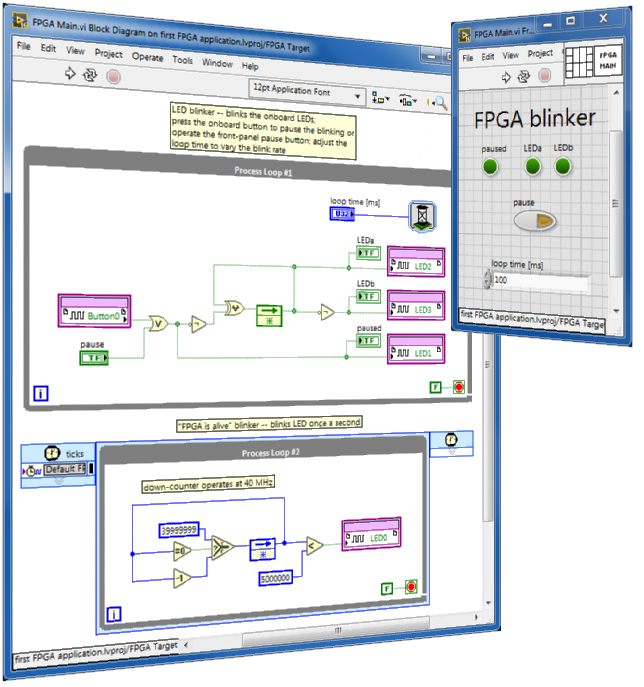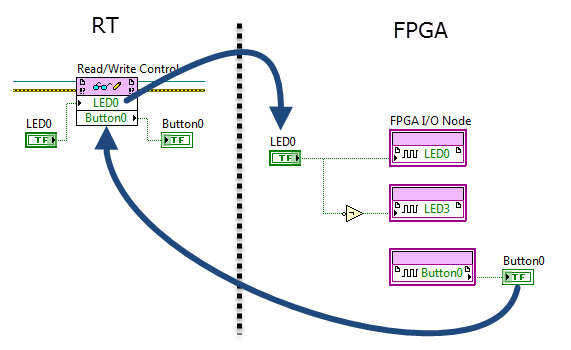RIO Developer Essentials Guide for Academia
"Read-Write Control" element

Make your first FPGA application
FPGA procedure
Follow along with this step-by-step tutorial to make a "hello, world!"-like application to experience the advantages of multiple linked VIs running simultaneously on the FPGA target, real-time (RT) target, and desktop computer: (1) "FPGA Main" VI blinks the onboard LEDs and reads the onboard button; these onboard devices physically connect to the FPGA I/O pins, (2) "FPGA testbench" VI runs on the desktop computer for interactive development and debugging of "FPGA Main" in simulation mode prior to compiling to a bitstream file, (3) "RT Main" VI runs as the RT target start-up VI; it runs "FPGA Main", interacts with its front-panel controls/indicators, and communicates with an external desktop computer via network-published shared variables, and (4) "PC Main" VI runs on the desktop computer as a user-friendly human-machine interface (HMI) for remote command and control of "FPGA Main" through the network.
Programmatic front-panel communication with RT
FPGA code RT code
The RT VI operates (writes) the front-panel controls of the FPGA VI and reads its indicators.
Stream high-speed data through a network stream channel
RT code PC code
Efficiently transfer blocks of data between the RT and PC by network streams.
Stream high-speed data between FPGA and RT with a DMA FIFO
FPGA code RT code
Efficiently transfer blocks of data between the RT and FPGA by direct memory access (DMA) first-in first-out (FIFO) buffers.
Augmented default Academic RIO Device FPGA personality and high-precision waveform measurement application example
FPGA code RT code
Load and run a modified version of the default Academic RIO Device personality (FPGA bitfile) augmented by user-defined functionality, for example, to make a high-precision measurement of pulse width.
FPGA/RT and FPGA/host inter-target communication
FPGA guide RT guide PC guide
Transfer data, commands, and status between the FPGA target and a host system (RT or PC).
Programmatic front-panel communication with PC
FPGA code PC code
The PC VI operates (writes) the front-panel controls of the FPGA VI and reads its indicators.
Stream high-speed data between FPGA and PC with a DMA FIFO
FPGA code PC code
Efficiently transfer blocks of data between the PC and FPGA by direct memory access (DMA) first-in first-out (FIFO) buffers.







